
Inspirations
Explore the elevated life in the mountains. This content debuted in 2015 with Alpine Modern’s printed quarterly magazine project.
Oh La La, Très Chic: Chalet Les Gentianes
A very private ski-in/ski-out chalet in the French Alps
Courchevel / Saint-Bon-Tarentaise / France Les Gentianes is truly a ski-in/ski-out chalet amid a winter wonderland in the French Alps. The chalet is located right on Courchevel’s Bellecôte piste in the prestigious and quiet Residence de Bellecôte. The splendid vacation rental with seven bedrooms and seven bathrooms is one of three exclusive chalets at this residence. The catered chalet has a swimming pool, Jacuzzi, massage room, and gym.
The centre of Courchevel is a less than five minute’s walk away.
Over the Edge
French filmmaker Sébastien Montaz-Rosset goes to vertiginous hights to tell extreme athletes' heart-stopping adventure stories
French filmmaker Sébastien Montaz-Rosset dangles off cliffs and races across mountaintops to capture his swashbuckling subjects’ daring stunts but also to convey an intimate look at their fears, failures, and triumphs.
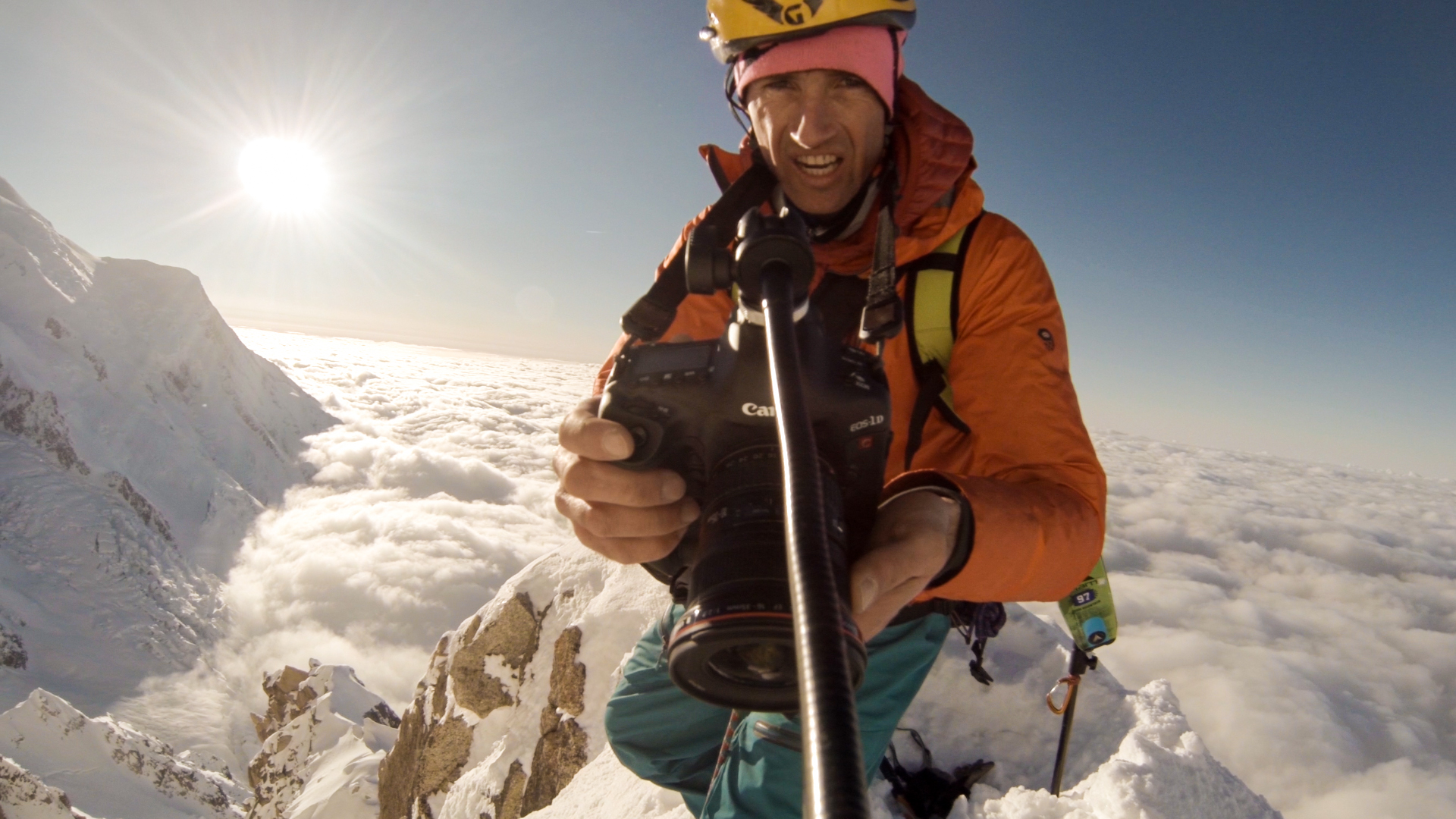
Watching the spellbinding work of French filmmaker Sébastien Montaz-Rosset, you want to cover your eyes but can’t look away all the same. The majestic mountaintop views immediately draw you in. But what mercilessly demands your soul and every fiber of your body is the heart-pounding terror that comes from witnessing death-taunting stunts; his subjects flirt with doom at every turn. This action-adventure-extreme-sports filmmaker captures shots from breathtaking angles most other filmmakers would never even dream of—say, dangling off a cliff or running along steep alpine ridges at full tilt. An athlete himself, Montaz-Rosset climbs—alongside his daredevil subjects—to virtually inaccessible locations thought to be beyond the realms of possibility.

High skill
That Montaz-Rosset is a passionate mountaineer, rock climber, runner, and skier goes along with the territory. It takes a high level of outdoor expertise and mountaineering skills coupled with innovative equipment to allow him to accompany people on their enthralling journeys. His work has been steadily gaining worldwide attention, most notably in the category of highlining, a combination of rock climbing, slacklining, and tightrope walking at treacherous heights, such as between two skyscrapers or mountain peaks. To slackliners, this is the pinnacle of the sport and something that’s attempted only after years of experience. Any small shift in weight or wind can easily send the cord into trampoline-like motion. Swift falls happen often, and while some use a fall leash to tether them to the main line, others pack only a small parachute as protection. The filmmaker and his athletes can’t plan ahead too much as the troupe pioneers this new evolution of the sport. Montaz-Rosset’s work requires quick thinking, improvising, and a remarkable amount of knowledge and training in wilderness safety.
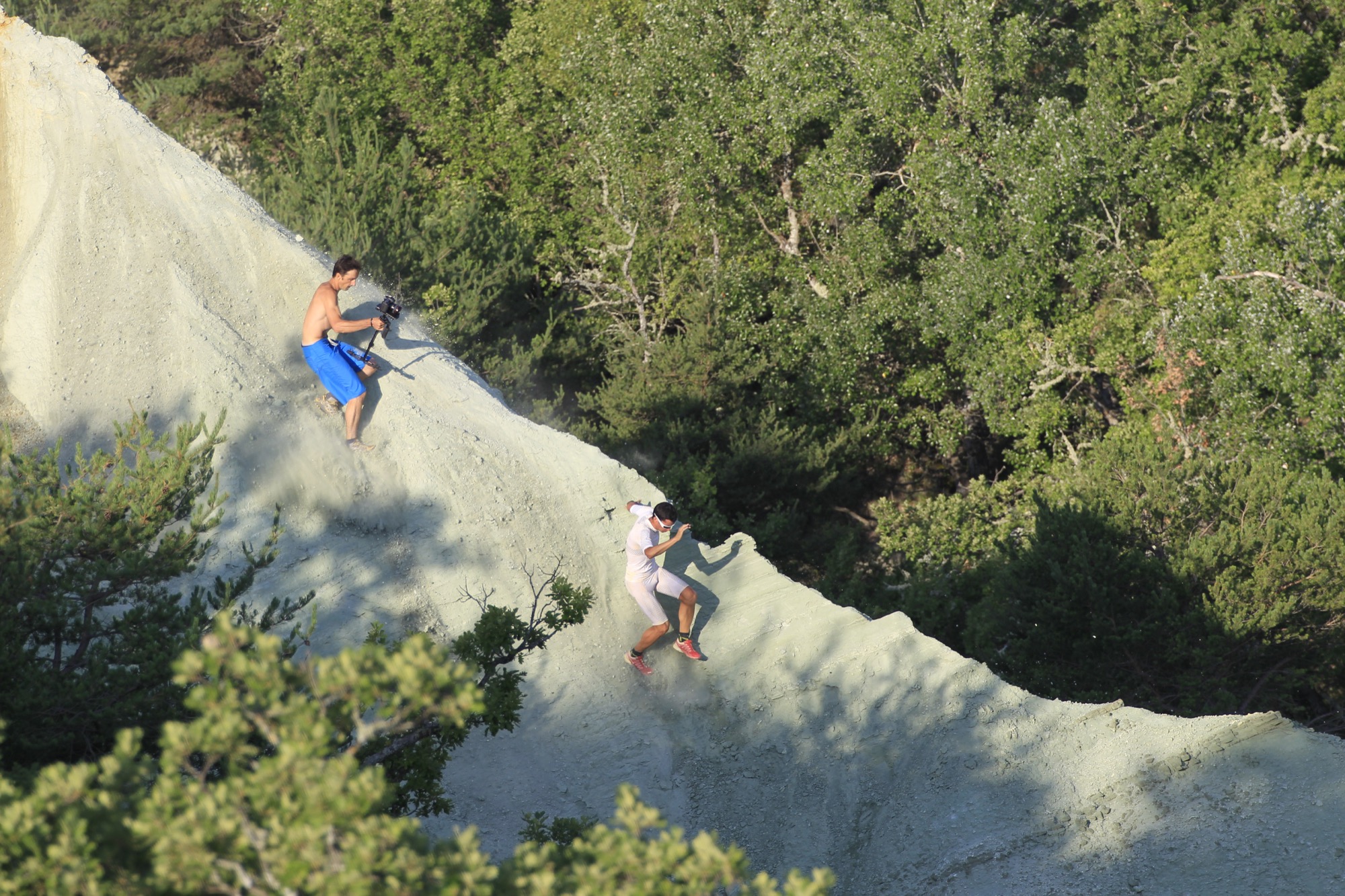
The mountain guide turned adventure filmmaker got his start shooting clients during mountain excursions in France. “I was born in Les Arcs in the French Alps and have always lived in the mountains. Skiing and climbing was what we all did growing up, and I became a mountain guide and ski instructor, like a lot of people who grow up in these areas,” says Montaz-Rosset.
Telling stories of triumph, fear, and failure
In addition to shooting commercials, Montaz-Rosset also recently filmed the first-ever attempt at suspending a highline between two hot-air balloons high above the Pyrenees. He strives to tell extraordinary stories about real people performing acts that trigger an avalanche of emotions in the athletes and their spectators. His work is aesthetically breathtaking, but it runs much deeper than thrilling action shots. It’s about letting the viewer behind the curtain to see the laughter, fear, triumphs, and failures. It’s about finding the strength to pursue aspirations. The filmmaker’s trick is to show the athletes’ point of view—the passion—so the viewer has an emotional connection while watching their gut-wrenching maneuvers; and sheer, raw vivaciousness bleeds into every frame of his films.
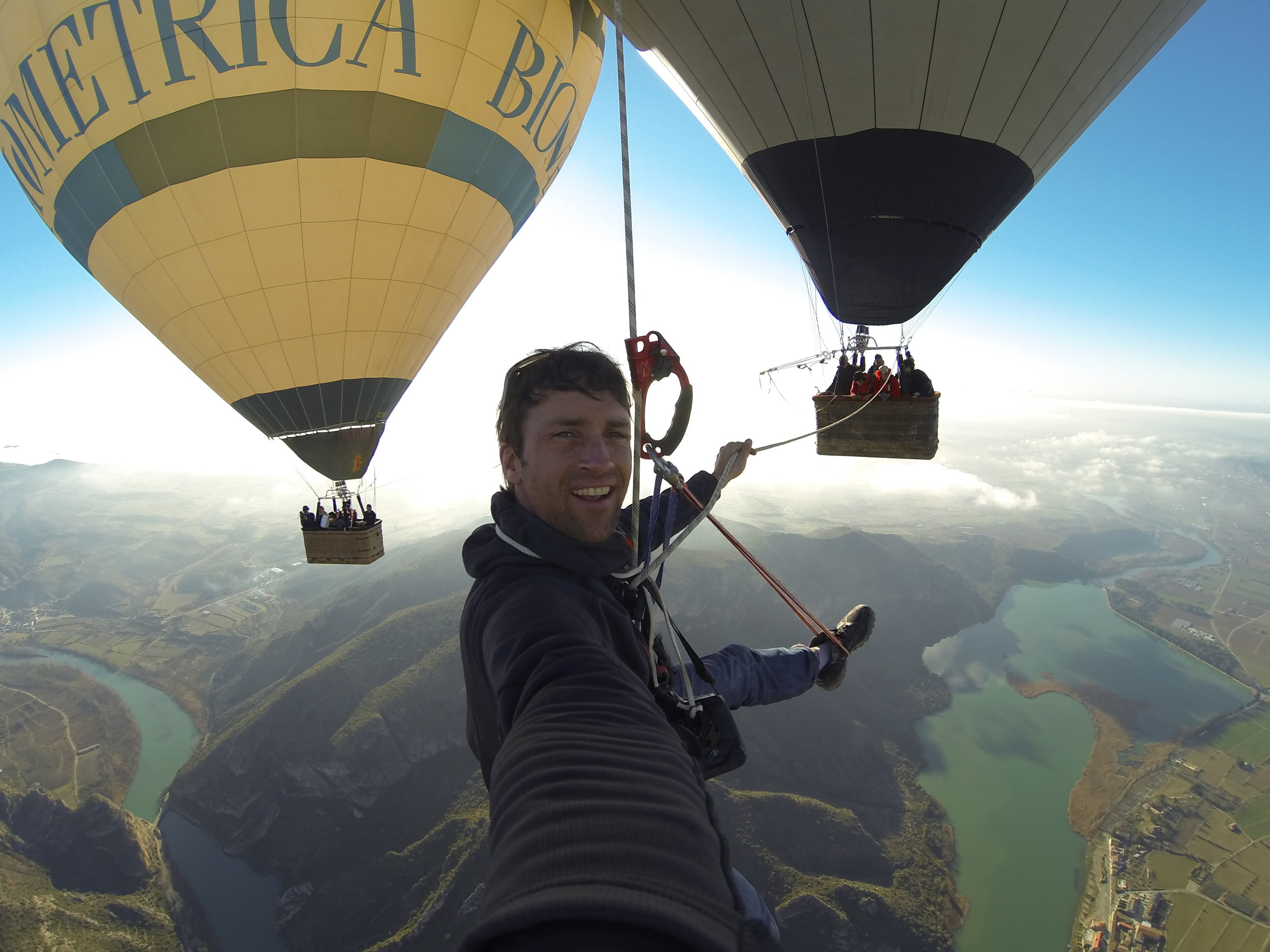
While high anxiety is a natural element of any extreme sport, Montaz-Rosset’s films show how the athletes react to and embrace it. “The people I film are so expert at what they do, fear isn’t really a big factor. It’s always present, but it helps you to concentrate on what you’re doing...it brings focus.”
“The people I film are so expert at what they do, fear isn’t really a big factor. It’s always present, but it helps you to concentrate on what you’re doing...it brings focus.”
The twist is that the athletes themselves don’t know if their stunt will be successful or not. The films are about the attempt and all the internal and external obstacles that go along with the journey. “I love telling stories, and I get inspired wherever there’s an interesting and different story to tell. It doesn’t have to be adventure sports, but that’s the environment I’ve grown up and live in, so the stories I tell are about the people in this environment,” he says.
The Flying Frenchies
So who are the subjects who fuel this high-octane artwork? Enter The Flying Frenchies, a wild and gregarious bunch of twenty or so lively, flamboyant characters. All are entertainers in their own right; each is equipped with her or his own skill and zeal. Performance art marries adventure sport in Montaz-Rosset’s film The Flying Frenchies: Back to the Fjords, where this gang of extreme athletes and performers bands together to create an outdoor alpine extravaganza like no other.
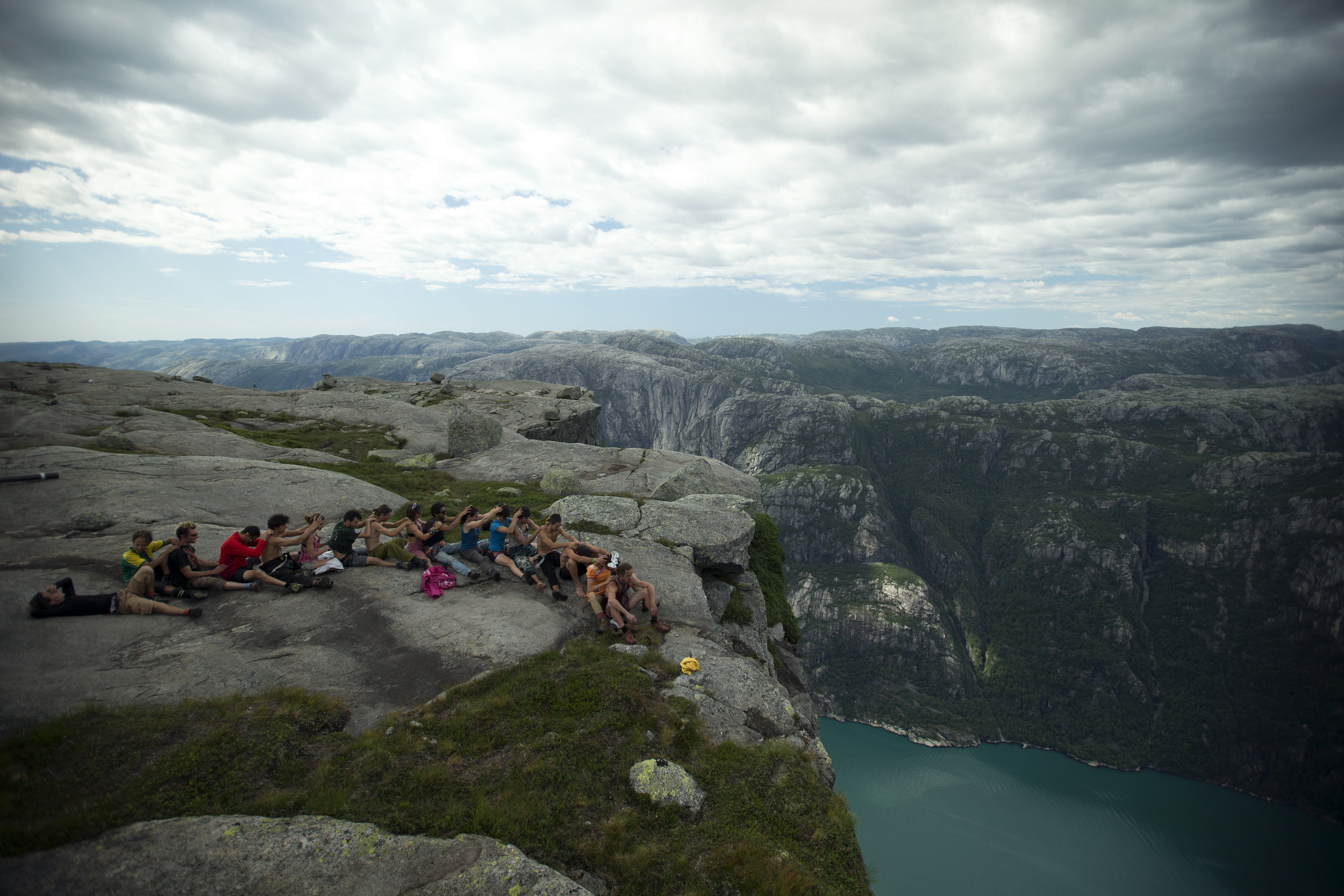
“These guys are always thinking up new ideas for stunts and things to push themselves in what they do. Several of them are circus performers, or they’re climbers and mountaineers, essentially. So what I’ve filmed is just a small part of what they do.”
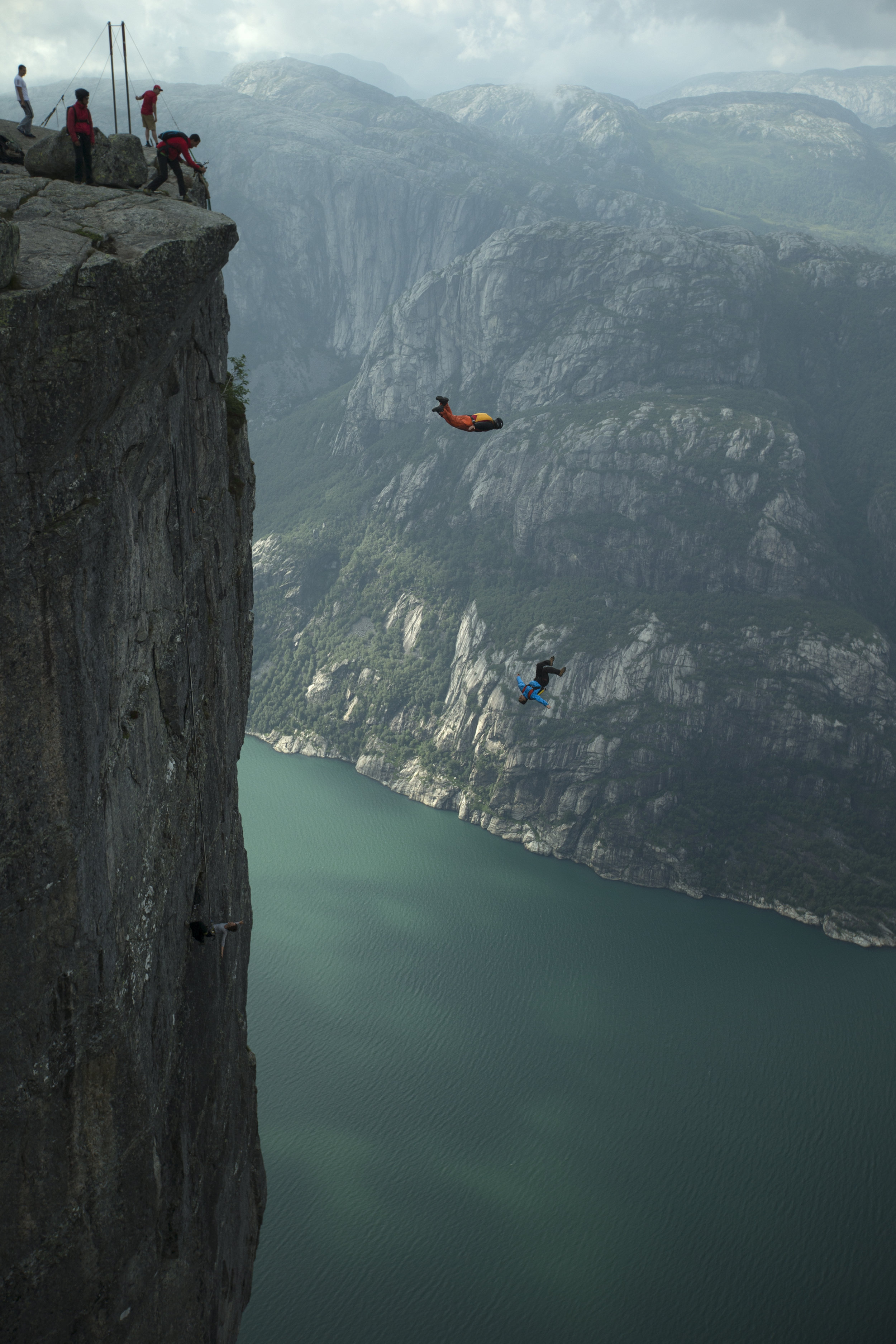
Engineers, along with BASE jumpers, wingsuiters, and musicians, make up the colorful pack. In Montaz-Rosset’s film, he follows the group as they travel through the fjords of Norway on a monthlong trip, embarking on various new extreme-sport-style adventures. Although at first glance it all feels very whimsical and impulsive—perhaps because they intermittently don clown costumes and props—months of painstaking preparation have gone into planning the journey, including intricate mathematical calculations and rigorous testing phases.
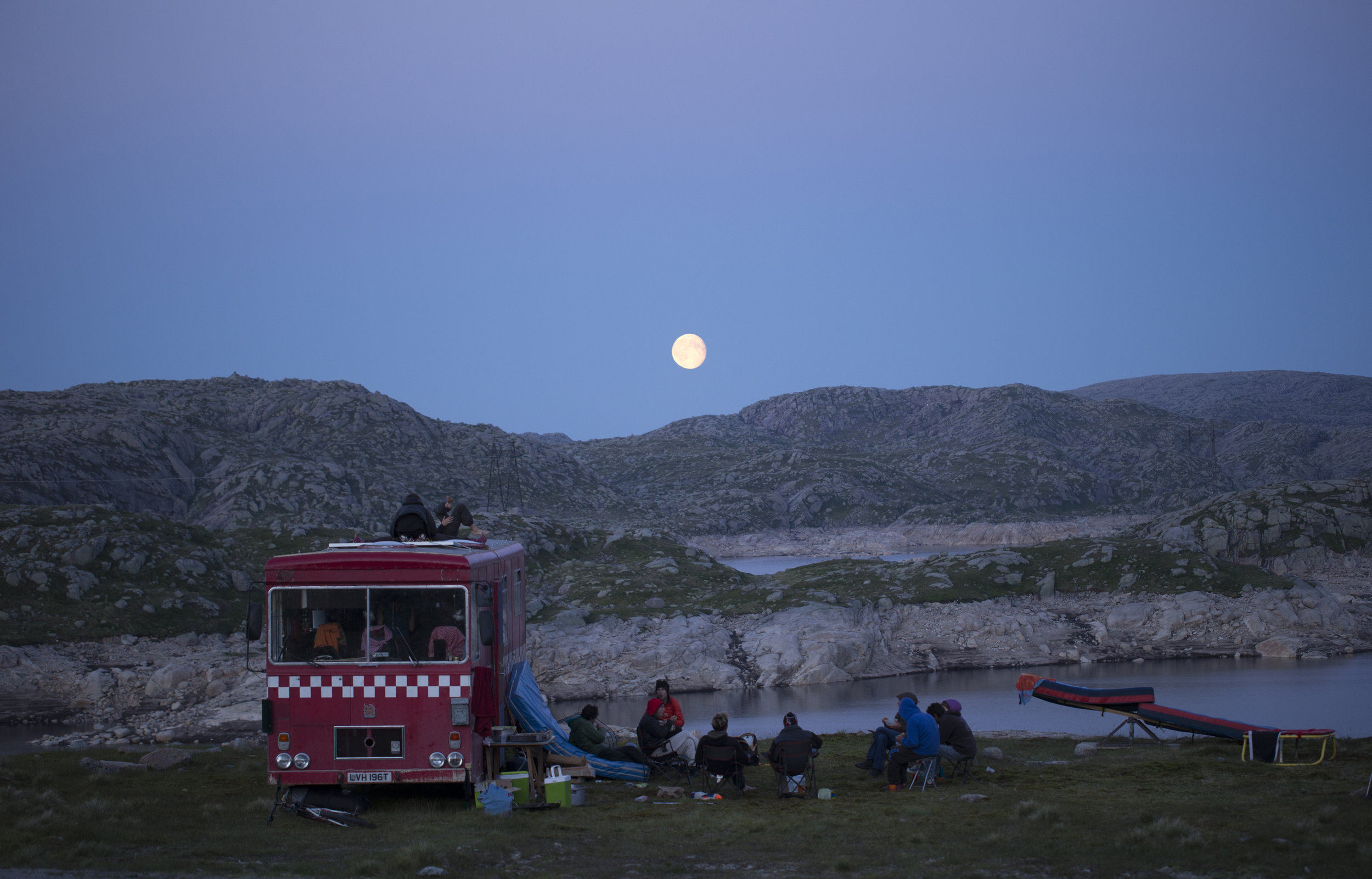
The Flying Frenchies travel across the country in a vintage red circus bus that has been renovated and packed to the gills with enough food for roughly a month. They also strongly value leaving zero waste as they go along, which takes additional planning. At night, the crew sleeps in tents, battling wind and rain and sometimes unexpectedly harsh elements. Montaz-Rosset captures outbursts of laughter and impromptu dancing, juxtaposing those scenes against hushed moments of stomach-knotting stunts in progress. On one rough night, gusting winds hurled a tent filled with camera equipment off the top of the mountain. “It was more of a setback timewise...we lost some things, but there was enough gear to be able to replace what was lost,” he says.

Artistry and athleticism
The worlds of performance and mountain sports collide when filming visually stunning footage of athletes running and cartwheeling off the mountain’s edge before parachuting down into the valley. Beautifully blending artistry and athleticism, the film embodies—and embraces—doing the impossible. Clowns and acrobats climb peaks; other performers BASE jump off slacklines. It’s about watching people push themselves to the brink of their physical and mental abilities—to witness what unleashes a landslide of emotion from within their souls and sets their spirits free—that we feel an incredible, intangible connection to them. “I just let them do their thing and try and be as unobtrusive as possible. You never know what you’re going to get filming them, so it’s always fun,” says Montaz-Rosset.
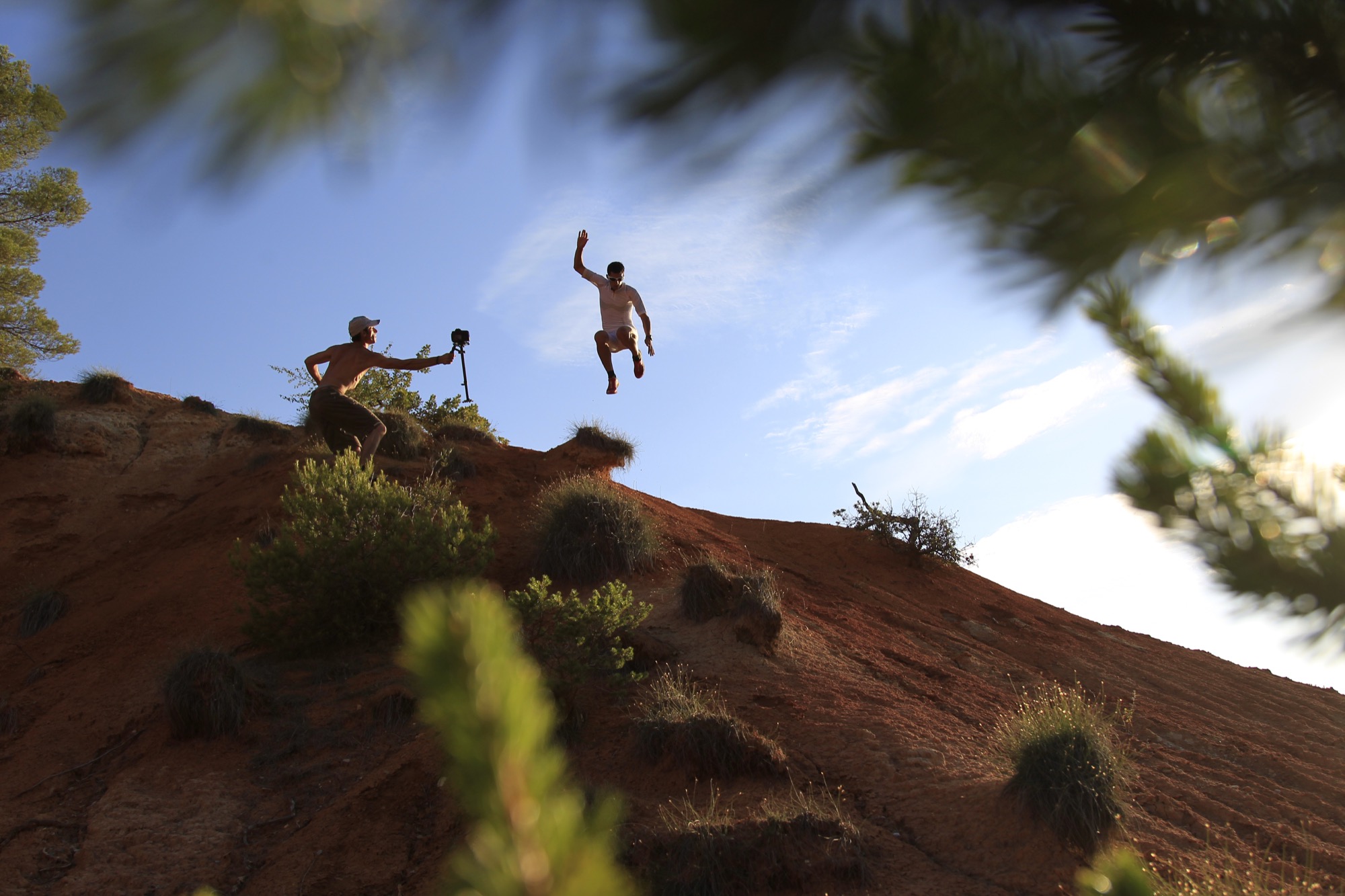
The summit of the adventure in Back to the Fjords occurs when The Flying Frenchies assemble and test an enormous human catapult they’ve dreamed up and meticulously engineered to launch each other off the mountain. It’s carried piece by piece up to the peak and assembled near the edge, a colossal experiment. The vision was to shoot performers skyward—all the while hoping they wouldn’t pass out from bearing up against 10 Gs—so they’d still be able to safely deploy their parachutes to float down to the valley below.
The filmmaker says, “Most of the people I film are people I know as friends, or have gotten to know from working and living in the mountains. The extreme sports are what they do, but it isn’t who they are...so filming the sports is a way of telling their stories. And, of course, these sports have a big visual impact.” There is intimacy in watching someone embark on the unknown. The viewer feels the sensation of being set free along with the performer and can experience, in tandem, a refreshing jolt of the liberation that comes from propelling at breakneck speed through the air, arms and legs flailing about.
“The extreme sports are what they do, but it isn’t who they are...so filming the sports is a way of telling their stories.”
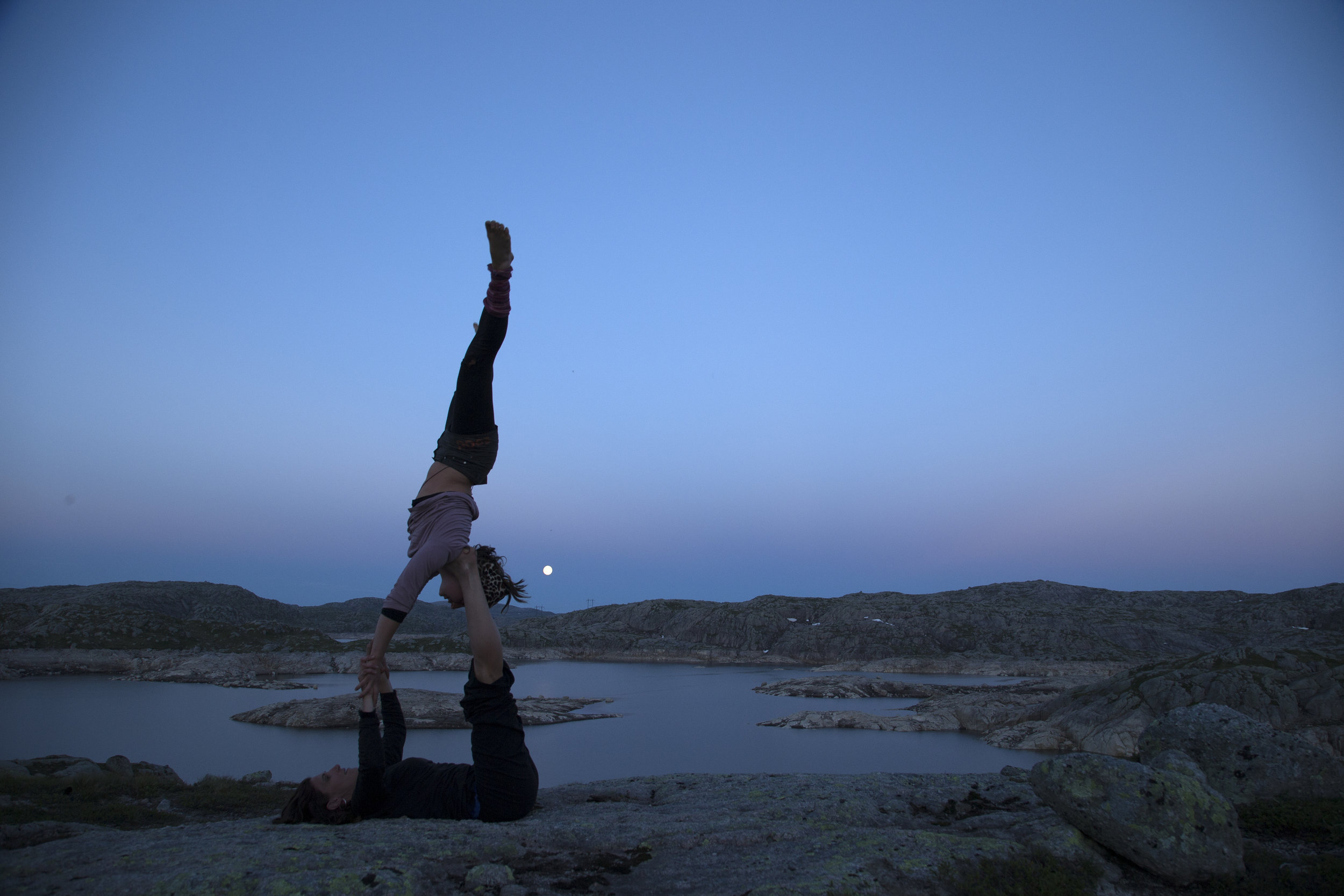
Seeing The Frenchies feed off and inspire one another, their sense of camaraderie and friendship is palpable. Montaz-Rosset shows how these friends test the boundaries of their bodies and their relationships. The filmmaker and his subjects together push the confines of their sport and their personal lives. Pioneers in adventure-filmmaking and new sports, they transform viewers by manifesting that the impossible is possible. △
In Memoriam Tancrède Melet
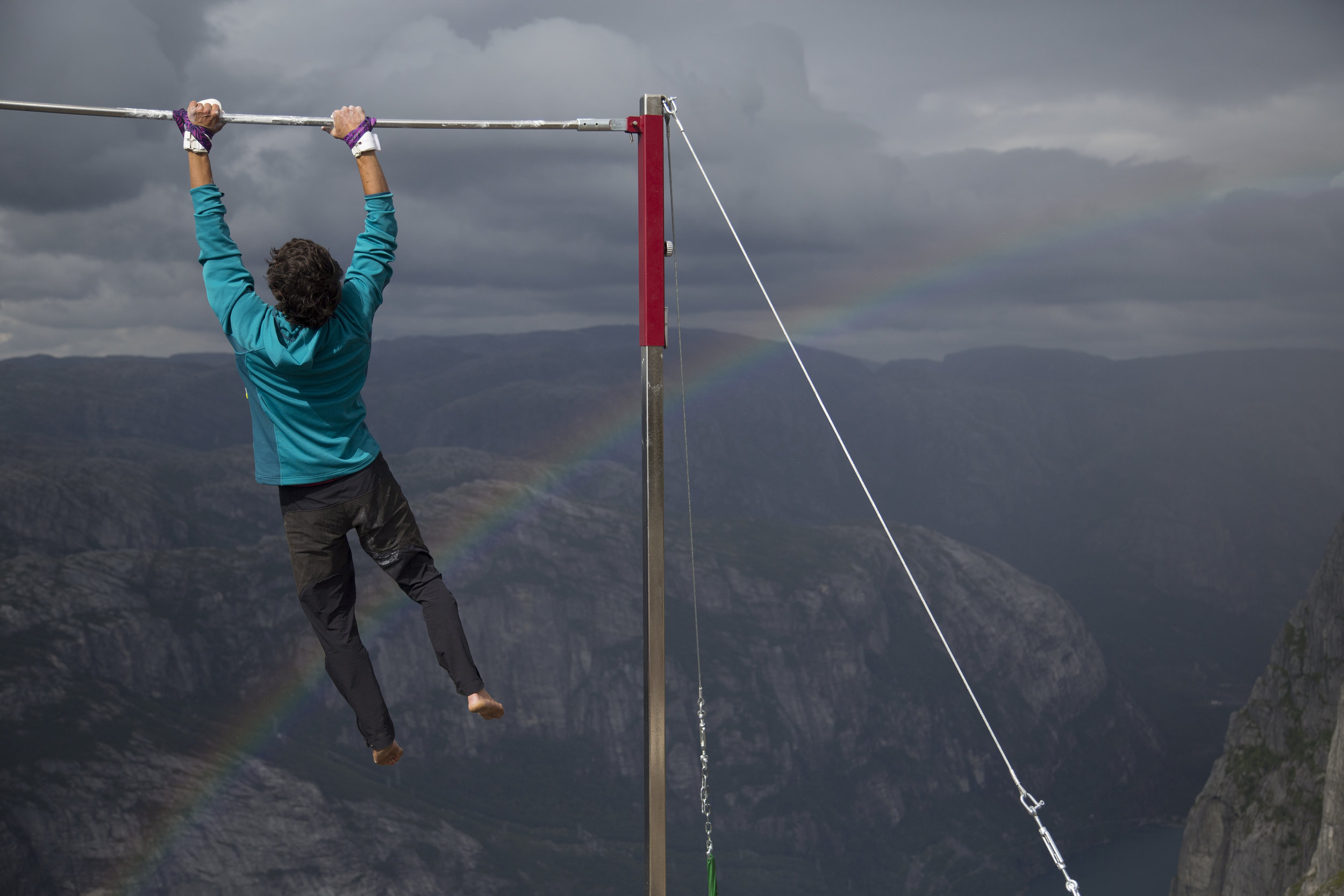
With the heaviest of hearts, we are sharing with you that shortly after this story was written, we learned Flying Frenchie Tancrède Melet died while preparing for a hot-air balloon stunt in Drôme, France, in January. The 32-year-old expert slackliner, BASE jumper, and wingsuiter accidentally fell approximately 100 feet (ca. 30 meters) when the bal- loon abruptly sprang off the ground. Melet leaves behind a life companion and a young daughter. His death is a stark reminder of how all too fragile life truly is and that no matter how trained we are, how meticulous, how dynamic, how invaluable to others—the unthinkable still happens.
Sleep Elevated
7 alpine-modern places to stay in the Alps
From a remote minimalist hut to a decadent chalet fit for the royals, modern design lovers stay happy in these hotels and vacation rentals at — and high above — stunning mountain resorts in Switzerland, Austria, Italy and France.
Monte Rosa Hut / Switzerland
Modern mountaineers bunk at the 120-bed Monte Rosa Hut with grand views of the Matterhorn. More »

Wiesergut Design Hotel / Austria
Set against a bucolic backdrop of ski slopes and hiking trails, luxurious suites, a splendid spa and exquisite cuisine make Wiesergut a rare alpine retreat. More »

Whitepod Eco-Luxury Hotel / Switzerland
Sleep in a geodesic-shaped tent at the Whitepod Hotel for an entirely different vacation experience without sparing the comfort of a king-size bed and a full bathroom. More »


-
Feldmilla Design Hotel / Italy
The Feldmilla Design Hotel in South Tyrol offers panoramic views of the Dolomite mountains and uses clean energy from its own hydro-power plant. More »

Chalet Les Gentianes / France
Part of a quiet residence in the world's largest linked ski area of Les Trois Vallées, chalet Les Gentians has a swimming pool, Jacuzzi, massage room, and gym. More »


Kristallhütte / Austria
Hotel and hipster après-ski hangout of the moment, the Kristallhütte sits slope-side in the ski area of Hochzillertal Kaltenbach. More »
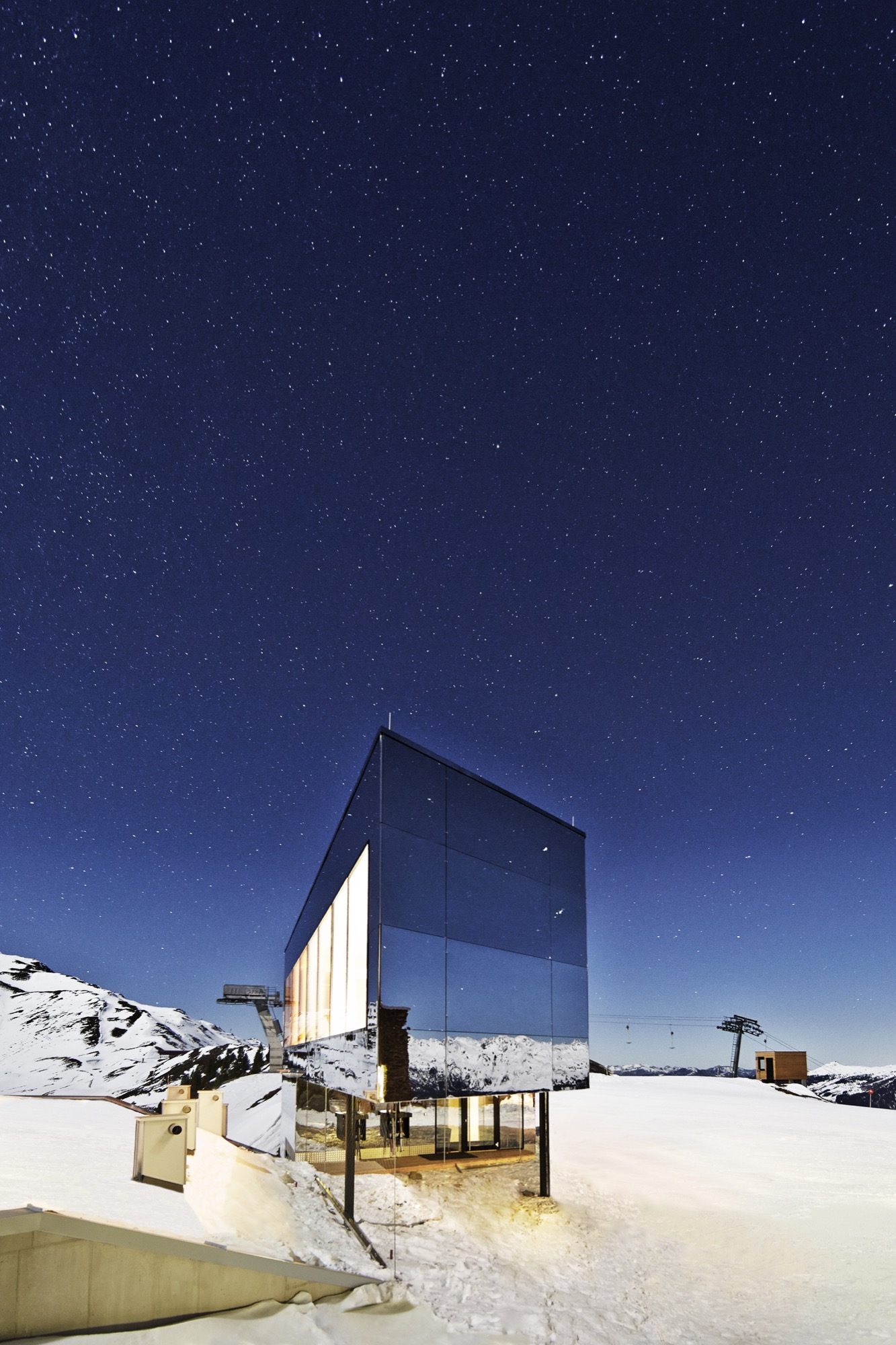

Chalet Zermatt Peak / Switzerland
Indulging in little extras, such as a personal chef and serving staff, the rich and the royals have stayed at Chalet Zermatt Peak in pure luxury, with grandiose views of the Matterhorn. More »


Extreme Shelter
Living ecological alpine pods in the Italian Alps
Test laboratory mountains: The Italian architect duo behind LEAP (living ecological alpine pods) design-builds modular solutions for harsh high-altitudes. Luca Gentilcore and Stefano Testa, founders of LEAPfactory, Turin, Italy, share a strong passion for alpine adventure and avant-garde architecture. “We love exploring the limits in both fields,” says Testa. “LEAP, to us, represents quality of life and a love for nature, particularly pure nature, and the devices humans build to survive — may these be sweaters, camping tents, or high-tech buildings. We do not limit ourselves or our activities.”
"LEAP, to us, represents quality of life and a love for nature, particularly pure nature, and the devices humans build to survive — may these be sweaters, camping tents, or high-tech buildings."
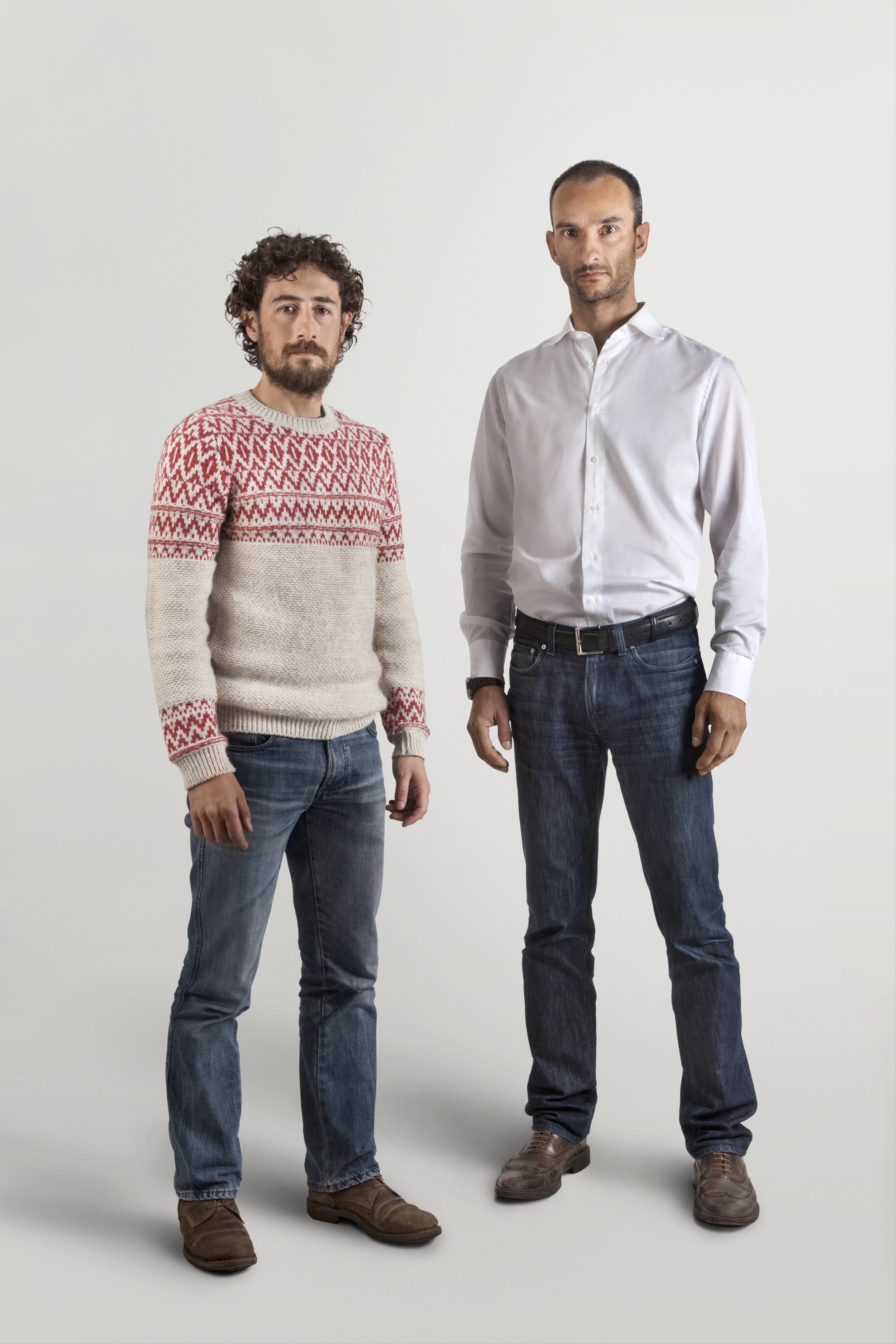
The mountains are their test lab. “The extreme conditions, the essential dialogue with a marvelous and strong nature, the loosening of human rules and customs — all this makes mountains the best setting for focusing our goals.”

Both men are avid mountaineers. “The mountains are where I feel free, and nature is the vehicle to look for the deepest sense of life. I spent thirty years of my life rock climbing around the world. I climb less often now; it’s still the best way for me to have time to breathe deeply and to find my balance,” tells Testa. A perfect day? “Climbing a perfect sequence of beautiful holds on a sunny rock wall and, at the end of the day, a dinner around the fire with my family and friends in a clearing, the scent of tree sap in the air.”
Continues the architect, “After many years of studying, practicing, and teaching architecture, LEAP is a way of bringing together my two souls — nature and artifice, technology and beauty. This is the path of LEAP design research.” Testa studied the masters of modernity, the Italian tradition of the fifties, and the radicals' tenets of the seventies. He also worked with contemporary artists. “All these things influence my work today,” says Testa, yet he adds, “I love to think there is not one design style in my work. Instead, there is a continuous search for the right answer to specific questions and places.”
"After many years of studying, practicing, and teaching architecture, LEAP is a way of bringing together my two souls — nature and artifice, technology and beauty. This is the path of LEAP design research."
To Gentilcore, the mountains have meant different things throughout different periods of his life — fun, exploration, culture, relationships with the force of nature and with other people. “The mountains for me evoke these emotions that have the power to remove the filters contemporary society imposes on us. In that sense, the mountains have become a fundamental component of life for me that I can't do without.” Last summer, Gentilcore hiked with his wife, their two children, and a donkey through the wild landscapes of the Massif Central in France for fifteen days. There, I felt really happy.
"The mountains for me evoke these emotions that have the power to remove the filters contemporary society imposes on us. In that sense, the mountains have become a fundamental component of life for me that I can't do without."
Respect for the mountains is innate for Gentilcore. “It's respect for nature itself and the culture that the mountains represent. I think this sentiment is originally part of all of us, but it is often clouded and hidden.” It has helped him discover how efficiently humans and nature respond to extreme, hostile environment. “To design for the mountains, we need to study successful sustainable solutions we can adapt to urban and ordinary contexts in the future.” He’s inspired by fields other than architecture that offer alternatives to the traditional way of building. “For the Gervasutti project, for example, we looked at aeronautics and boating; other times we have turned to the world of high-end furniture. For this reason, our projects are almost always new construction systems or new building types.”
Nuonuova Cappana Gervasutti, Mont Blanc, Courmayeur, Italy
Gentilcore and Testa relish untouched alpine nature. But if they do put a dwelling on a pristine peak, blending in isn’t the program. Above preservation, the designers aim to enrich the diversity and quality of an inhabited, inherited landscape.
Hence, when the Turin Alpine Club commissioned the new Gervasutti hut under the east face of the Grandes Jorasses in the Mont Blanc massif, the architects proposed what they now call “an ambitious solution.” It worked. “The site is very complex: a very small terrace on a rock buttress, in the middle of Freboudze glacier,” Gentilcore describes.
Rethinking the relationship between humankind, nature, and artifact, the two gave rise to a new generation of alpine bivouacs: an entirely prefabricated modular shelter that is airlifted by helicopter to its remote location and installed in only a few days, with minimized endeavor and without permanently altering the sensitive hosting place. “Modular design is a technical strategy to minimize the necessity of construction work on site. This is fundamental in fragile environments — and for our approach of ‘living in nature on tiptoes,’ ” says Testa, who has a PhD in interior design and has taught interior design and architecture and urban design at the School of Architecture of the Politecnico di Milano and industrial design at the New Academy of Fine Arts, also in Milan.

Transporting the new Gervasutti refuge by small helicopter to its installation site, high up between Haute-Savoie in France and Aosta Valley in Italy, was a lofty feat. “The typical aircraft used in mountain regions can load around 800 kilograms (1,764 pounds) up to 3,000 meters (9,843 feet) above sea level, so we realized four modules, entirely equipped, within that weight limit,” Gentilcore says. “At the same time, we had to guarantee very high mechanical resistance, due to the extreme environmental conditions. After several tries, we got to the final solution with an innovative prototype of a fiberglass shell.”
The high-tech tube thoroughly redefines the model of the traditional alpine bivouac built for survival, not comfort. “With the Gervasutti project, we aimed for something between a bivouac and a refuge,” Gentilcore says. “The comfort comes from cutting-edge technology, much like with contemporary mountain gear and clothes. But its environmental footprint is way lower than that of a refuge.”
"Modular design is a technical strategy to minimize the necessity of construction work on site. This is fundamental in fragile environments — and for our approach of ‘living in nature on tiptoes."
Stand-out Design
Gentilcore, who graduated cum laude in architecture from Politecnico di Torino in 2004, says much has been said about the aesthetic impact of the Gervasutti. “We thought, in the glacier landscape, there is no building tradition. And we didn't follow a mimetic approach relating to the strong natural environment. We designed a technical shape, and the shelter became an extraneous presence in the landscape.” The visual statement was purposive, beginning with the colors — white like the snow and the ice and red for visibility. The pattern is an homage to the traditional mountain sweater and, not least, part of LEAP’s corporate design.
Gentilcore interposes, “We also have to say that the circulated photographic portraits of the Gervasutti are completely different from the tiny, diminishing presence of the building when observed in person in the surroundings of this majestic landscape.”
The new Gervasutti shelter has become a hiking destination. “Last year, more than 600 people signed the hut book,” says Gentilcore. “Before our installation, the Freboudze valley, one of the most beautiful valleys on the Italian side of the Mont Blanc massif, had just twenty visitors per year.”
Founding Leapfactory
The partners reveal that the research and resources they invested in the Gervasutti project were utterly disproportionate to the realization of a single building. “We decided to found LEAPfactory and to develop a special building system, the LEAPs1, to commercialize it,” Gentilcore looks back. The year was 2013. The s1 was the first LEAP product.
The living ecological alpine pods are completely reversible by design, an essential ecological benefit of the s1 system. No concrete foundation. No ground alterations. “It leans on legs anchored to the rock with bolts,” Gentilcore explains. “Working at 3,000 meters of altitude is really hard — for the people and the ecosystem — so every activity on site needs to be minimized.” What’s more, by virtue of the extreme lightness of s1’s components, the number of required “heli rotations” (flights up the mountain and back) equals the number of modules. An individual module that sustains damage can be flown off site for repairs.
The modular structural sandwich–constructed shell, the quintessence of the s1 system, is made of a sophisticated synthetic composite compound, similar to materials used in manufacturing competition speedboats. An additional thermo-reflective insulation layer provides an advantageous microclimate inside the pod, even without a heating system. Warmth comes from thermal sources such as a cooking stove and even the inhabitants’ body heat.
A photovoltaic film integrated into the pod’s shell powers electrical devices. There is an Internet and a radio connection. A remotely controllable digital system monitors various functions of the s1, for example, energy autonomy, and provides information about internal and external weather conditions.
The configurable single-function modules (entrance; living module with kitchen, dining area, and pantry; sleeping quarters; bathroom) allow for flexible functional programs. “The big window at the extremity, ‘the eyelid,’ as we call it, transforms the building into a landscape-watching machine,” Gentilcore says.
Eco Hotel Leaprus 3912, Mount Elbrus, Caucasus, Russia
In September 2013, LEAPfactory installed an eco hotel for the North Caucasus Mountain Club as the first in a series of projects intended to encourage tourism in the region. LEAPrus 3912 comprises four tubes, built from prefab s1 modules, on the south side of Mount Elbrus, Russia. The refuge sits almost 4,000 meters (13,123 feet) above sea level along the standard route to the summit.
“The LEAPrus project was even more ambitious compared with Gervasutti,” Gentilcore says. “Fifty beds, a restaurant with kitchen, bathrooms with warm showers, heating in every room, a system to melt the snow to get water.” The hotel today operates year-round, hosting skiers in winter. “The off-grid functionality was demanding. We built a plant that produces energy from the sun and wind.”
Like the bivouac pod in Italy, the entire LEAPrus structure was installed in a few days, once again using helicopters. “We had less time than originally scheduled because all the operative helicopters in the region were in Sochi, busy with building the Olympic facilities. We remember the thirty-eight heli rotations over three mornings very well . . . and the evening of the third day, when our staff rested in our buildings that were just assembled and outfitted with electrical light, heating, and the operative kitchen,” says Gentilcore. “A super spaghetti party was organized, after many Russian soups in the construction barracks the days before.”
That night, Gentilcore slept right in front of the eyelid. “I will never forget this experience, the main Caucasian mountain range beneath me, in the sunrise . . . ”

Pod Lifestyle: LEAPS1 as Private Residence
Aside from the extreme conditions of Gervasutti and LEAPrus, Gentilcore says his company’s goal for the s1 system was to apply today’s best building practices, with particular focus on the ecological process. LEAPfactory has received many inquiries about the s1 as residential dwelling, although no one has realized it as tiny house or weekend cabin yet. “The LEAPs1 is a really sophisticated product, and it's quite expensive,” says the architect. “We can imagine s1 as an efficient off-grid house in a beautiful forest . . . with the ease of moving it to a new place.” △
Photos by Francesco Mattuzzi
